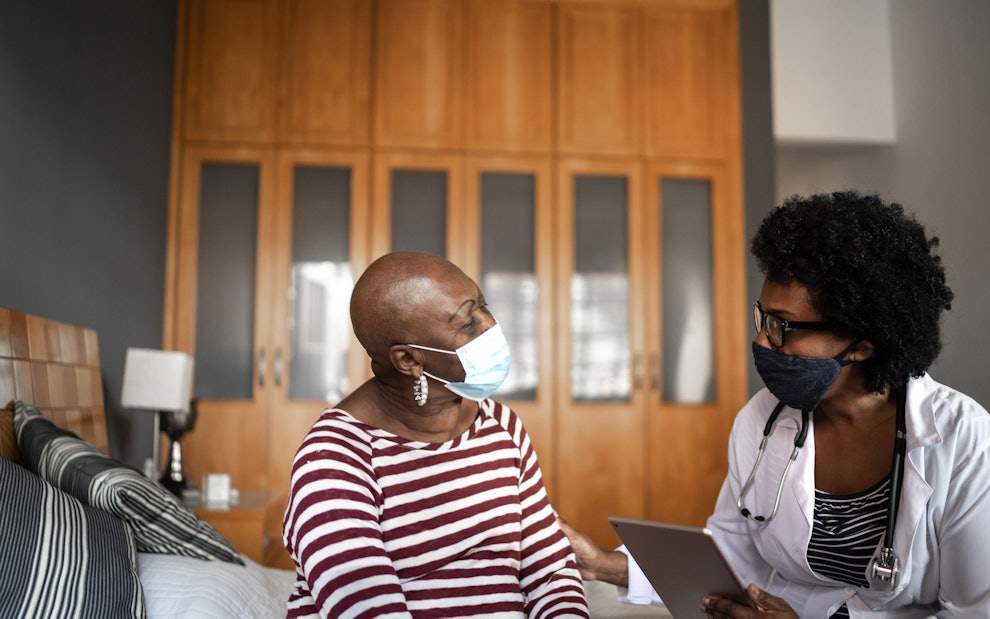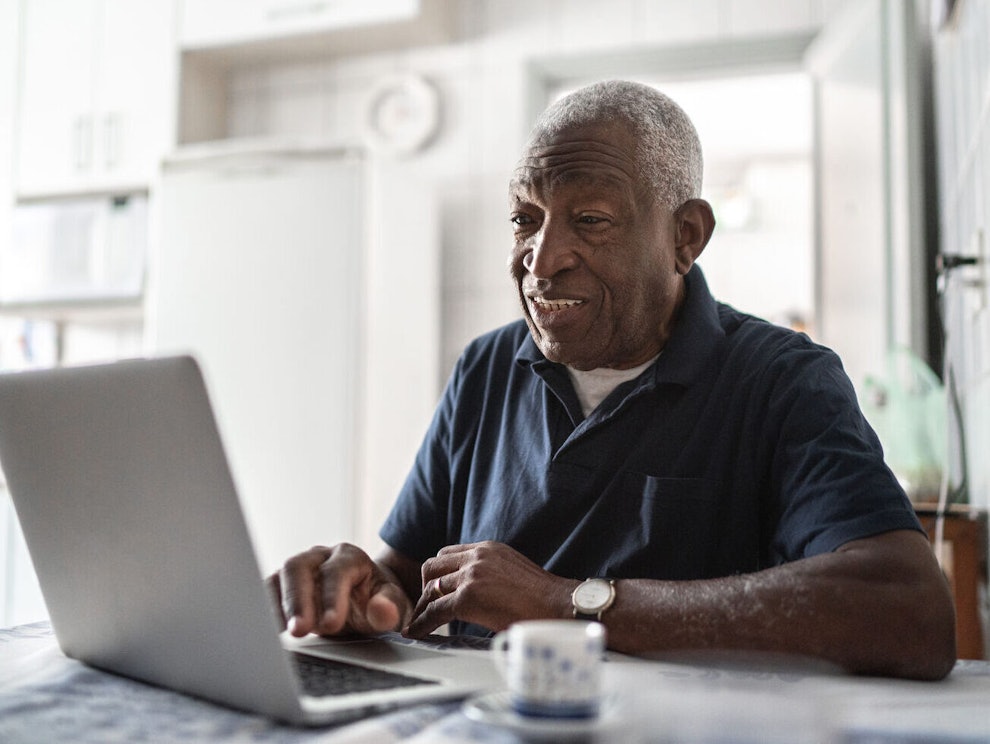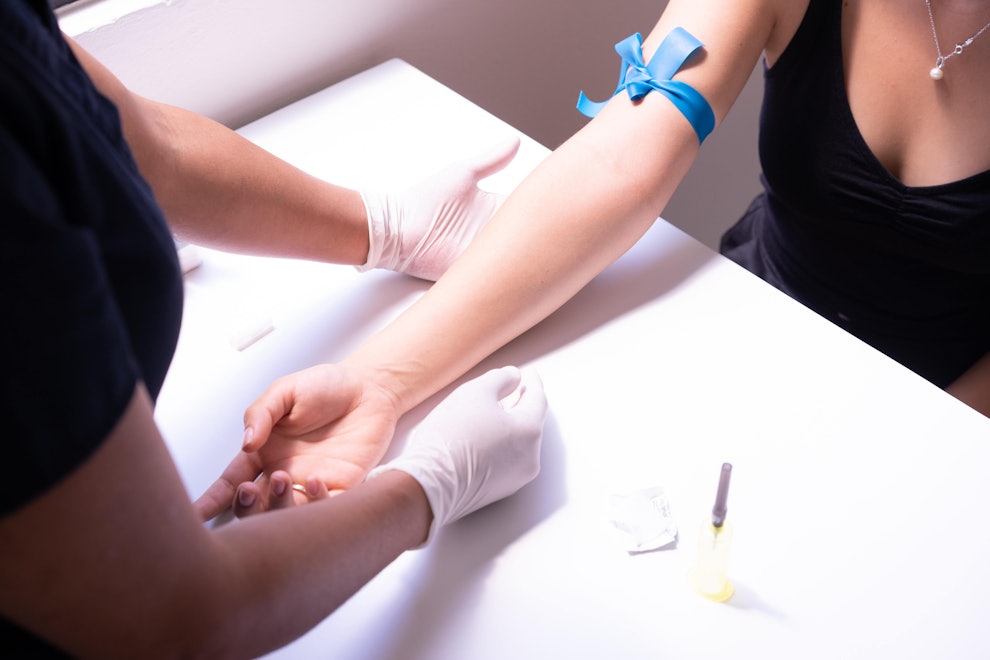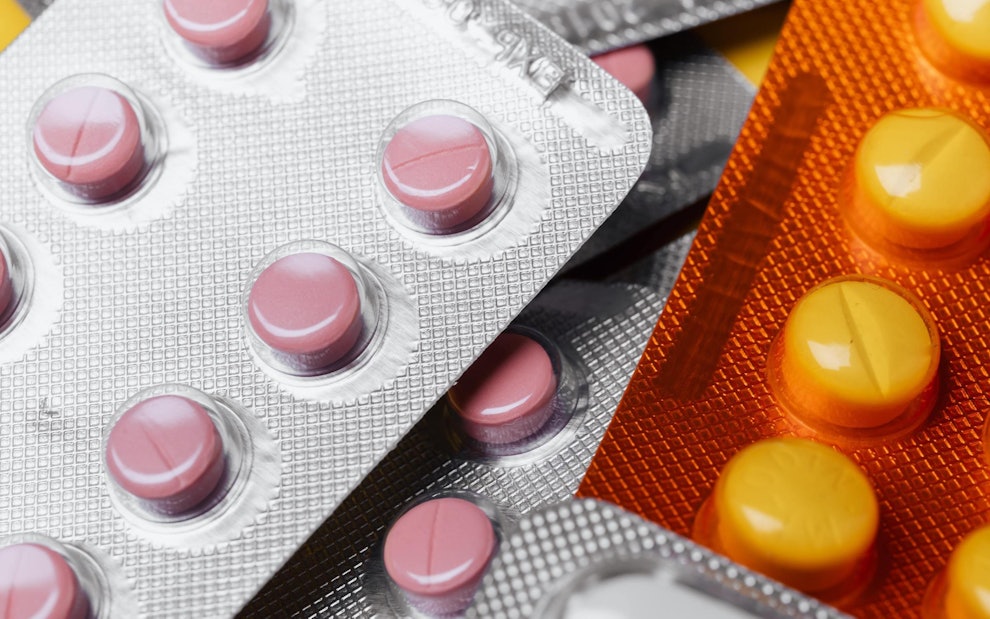Article at a glance
Blood tests are very common and are used to help identify illness, as well as check the general health of a person.
Some may experience anxiety or nervousness about blood tests due to a fear of needles or blood.
There are steps a person can take to reduce anxiety and prepare for a blood test.

Why Do People Need a Blood Test?
There are a few different reasons why you could need a blood test done:
To identify illness: your healthcare provider may have requested a lab test to check for certain conditions or illnesses based on symptoms.
Routine blood test: for an annual physical, your doctor may run a few common blood tests (such as cholesterol tests, blood enzyme tests, blood glucose tests, etc.) to ensure you’re in healthy, physical shape.
Note: Blood tests are extremely common and aren’t an immediate cause for concern.

Types of Blood Tests For Older Adults
While bloodwork can be requested throughout a person’s life, there are some specific blood tests that a physician might request as a person ages. Some of the more notable tests include:
Complete blood count (CBC): a test that evaluates a person’s individual blood cells (both red and white), which can identify health issues a person may be susceptible to.
Thyroid function: tests that measure the amount of thyroid hormone a person has (thyroid disorders are more prominent in older women).
Vitamin levels: as a person ages, their vitamin levels tend to go down—a blood test can help check those vitamin levels to see what needs to be regulated.
Lipid panel: also known as cholesterol tests, measures the levels of fat and cholesterol in a person’s blood.
Blood glucose: also referred to as measuring blood sugar, this can help measure the level of glucose (sugar) in a person’s blood.
Preparation Before The Draw
Blood work may require specific preparation before it can begin. A primary care provider (PCP) may give certain instructions to help make the process easier.
Ask Questions
It can be beneficial to ask your PCP if there are specific instructions to follow, such as whether or not it will be a fasting blood test (in which case you will not eat or drink for a specific time period prior to the test). If it’s not a fasting blood test, you can ask about other requirements.
Drink Water
Drink plenty of water before the test to ensure you are properly hydrated. This will also allow veins to be fuller and more noticeable and will increase your blood volume, making a blood draw easier to do.
Eat a Proper Meal
To prevent the possibility of fainting, eating a healthy meal beforehand is advised.
It’s important to note that some blood tests require fasting beforehand as the nutrients in our bloodstream can affect certain blood test results. Eating and drinking can have a potential effect on your blood (such as altering glucose levels, for example), so be sure to check with your PCP beforehand to determine whether or not you’re allowed to eat or drink before your blood test.
Wear Accessible Clothing
Choose short sleeve or easily-flowing clothing, so that blood draws are easier to do.
Warm The Area
Before the procedure, warming the general area where they are likely to insert the needle can allow better blood flow to the area, making it easier to identify a vein to use. You can most effectively warm the area by pressing a warm compress (such as a warm washcloth) or even a small heating pad or by wearing long sleeves/layers to keep the area warm (just be sure they can easily be moved to perform the test).
Discuss Medications and Allergies Beforehand
It’s important to discuss any medications you’re taking or allergies you have with your PCP and phlebotomist (the medical professional trained to perform blood draws). Certain medications may alter your blood test results and certain allergies may require the phlebotomist to alter their blood draw technique.
Certain medications or allergies to discuss may include:
- Blood Thinner Medication: It’s important for both your PCP and phlebotomist to know if you’re on blood thinners so they know to prepare for potential excessive bleeding.
- Latex Allergy: Most phlebotomists wear latex gloves during the blood draw so it’s important for them to know if you are allergic so they can prep differently.

Standard Blood Test Procedure
Typically, blood tests require only a short period of time (about 10 minutes for blood donation, or even shorter for a sample to be tested). While the process may vary slightly, the general procedure tends to be:
Wrapping a rubber band (tourniquet) around the arm (to make veins easier to identify)
Choosing a vein that is large and easy to access
Cleaning the area with rubbing alcohol
Inserting the needle (if there is an issue inserting the needle with the selected vein, another vein may need to be selected)
Allowing the blood sample to collect in the attached tube or syringe
Removing the needle and releasing the tourniquet
Placing gauze on the area to stop bleeding and applying a bandage

Tips To Reduce Anxiety
Having blood drawn may be a fairly short procedure, but some people may experience anxiety surrounding the idea of having a needle inserted or seeing blood. Having a fear of seeing blood is known as hemophobia and having a fear of needles is known as trypanophobia. If you have either of these conditions, it’s important to let your PCP and phlebotomist know so they can assist you appropriately throughout the blood draw.
When it comes to drawing blood, trying to reduce anxiety is not only beneficial for you, but also ensures that stress doesn’t result in increased blood pressure (which can constrict veins and make the procedure more difficult). There are a few things you can do to stay calm.
Take Deep Breaths
Taking deep breaths and focusing on your breathing before and during the appointment can help to relax your mind and body, making it easier overall. You can use breathing practices or simply focus on breathing deeply in and out.
Engage in Calming/Meditative Practices
It can be beneficial to pair breathing exercises with meditative practices as well, such as guided meditation. For some, listening to calming music before (or during, if your phlebotomist allows you to) can also help alleviate tension and promote a relaxed state.
Look Away When Blood is Drawn
If you have a fear of needles or of the sight of blood, ask the phlebotomist to have you look away before they insert the needle. Not visibly seeing the needle go in or the blood can potentially make the process easier.
Ask For Ways to Minimize Discomfort/Pain
Talk to your healthcare provider beforehand and let them know your concerns about having your blood drawn. Ask if there are ways or methods to minimize pain or discomfort such as numbing gels or using smaller needles.
Additionally, if you’ve had blood drawn before, let the person performing the procedure know if there is a specific vein or area that has worked well in the past to avoid being stuck by a needle multiple times.
Side Effects of Having Blood Drawn
During or after the test, you may experience the following side effects:
light bruising at the injection sight
lightheadedness
irritation at the injection sight
bleeding
soreness at and around the injection site
Side effects are temporary and tend to go away on their own. If you experience continued and/or immense bleeding at the injection site, even after using gauze and bandages, contact your healthcare provider immediately.
What To Do After Having Blood Drawn
After the procedure, there are a few things to keep in mind.
Eat After a Blood Test
Especially if required to fast beforehand, have a light snack and a bottle of water with you to consume after the procedure. This can help prevent nausea and lightheadedness and tide you over until you eat something more substantial. Some recommended snacks include:
Nuts, such as walnuts, almonds, or cashews
Peanut butter crackers
Peanut butter sandwich
Cheese and crackers
Bruising After Blood Tests
After a blood draw, it’s common to experience some light bruising around the area you had blood drawn. Some things to keep in mind:
- To prevent bruising: you can potentially help prevent bruising by firmly holding gauze to the area for at least 2 minutes—preventing blood from leaking around the opening and into the surrounding tissue.
- To help with painful bruising: if you experience pain/soreness from the bruise, use an icepack to help reduce any pain or inflammation.

Blood Test Results
After the blood draw is finished, if you provided a blood sample to be tested, your PCP will send the blood samples to a lab to be tested and will contact you with the results later on. Don’t be afraid to ask your PCP when to potentially expect your results back from the blood work. On average, most blood tests can have results sent back to your healthcare provider within 24 hours, though others may take longer. You will need to confirm this with your PCP, depending on the test.
Discussing Blood Test Results
Talking to your healthcare provider about your laboratory test results can feel daunting, but it doesn’t have to be. Below, there are a few tips to keep in mind.
Ask to be Notified About Results
In some cases, results that are normal may not be immediately communicated to a patient. Request your PCP to notify you of the results, even if they are normal. You can also ask if there is a website/digital notification system you can sign up for that can allow your results to be digitally delivered to you.
Follow-up With Your PCP
If your blood test results were expected to be received within 24 hours, it’s okay to follow up with the PCP 48 hours later if you haven’t received results before then.
Ask for Clarification
Your healthcare provider will likely try to break down your results for you, but if you don’t understand something—ask. Your provider wants you to leave being aware of all the information.
Ask About Next Steps
Once your PCP explains the results to you, ask about the next steps for treatment. If the blood work reveals previously unknown illnesses/conditions, your PCP will talk to you about treatments. Still, don’t be afraid to ask if you are unsure.
Bring a Loved One
Whether it’s a friend, family member, or caregiver, it can be calming to have someone by your side when receiving test results.
For older adults who may have trouble comprehending instructions or who have certain conditions that make a conversation like this difficult, having a caregiver present (such as a family member) can be beneficial to help ensure you understand all the information being provided to you.
FAQ
How much water should I drink before having my blood drawn?
A healthy amount of water will suffice, meaning around 64 oz. For more information on how much water you should drink daily, visit this source.
Sources
- https://www.nhlbi.nih.gov/health/blood-tests
- https://www.hopkinsmedicine.org/health/treatment-tests-and-therapies/blood-test
- https://nurse.org/articles/how-nurses-professionally-draw-blood/
- https://www.ncbi.nlm.nih.gov/books/NBK138665/
- https://precisionlabtesting.com/2022/01/31/types-of-blood-tests-seniors-need-to-take/
- https://patient.info/news-and-features/how-to-prepare-for-a-blood-test
- https://www.cambridgehealth.edu/career-profile-phlebotomist/
- https://swselfmanagement.ca/uploads/ResourceDocuments/The%20Joint%20Commission%20(2007)%20Improving%20Health%20Literacy%20for%20Patient%20Safety.pdf
Become a patient
Experience the Oak Street Health difference, and see what it’s like to be treated by a care team who are experts at caring for older adults.




